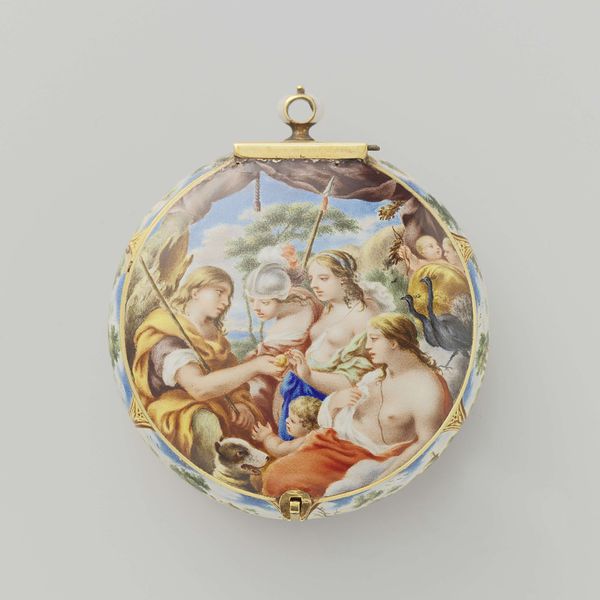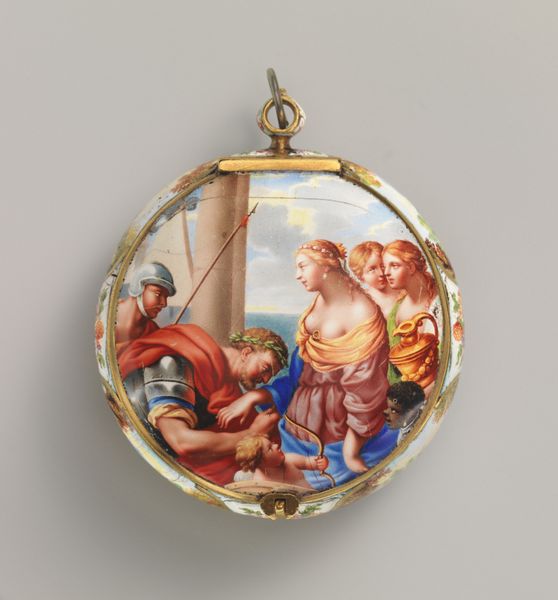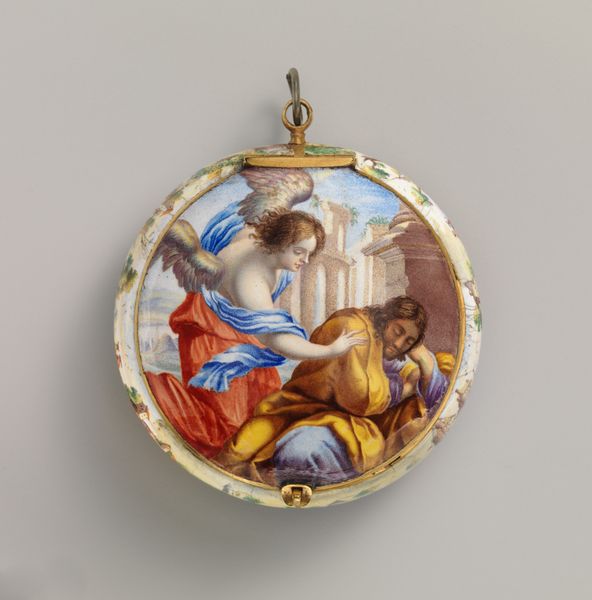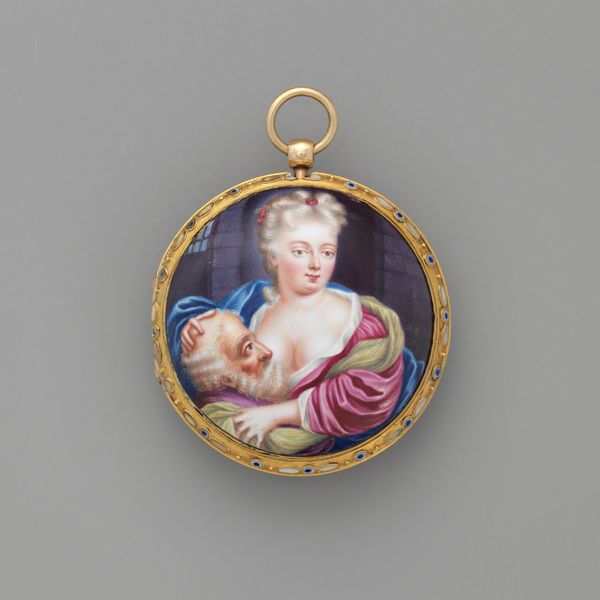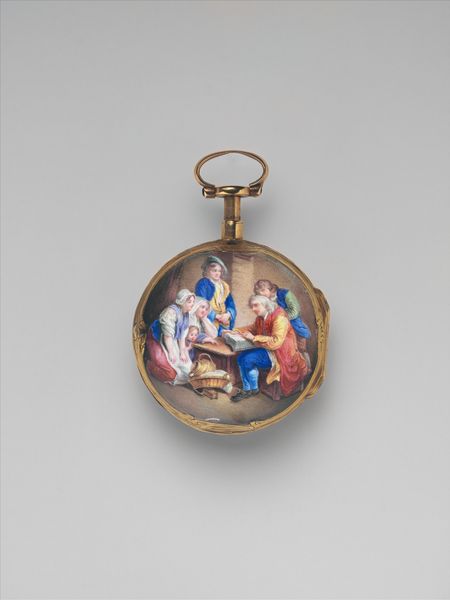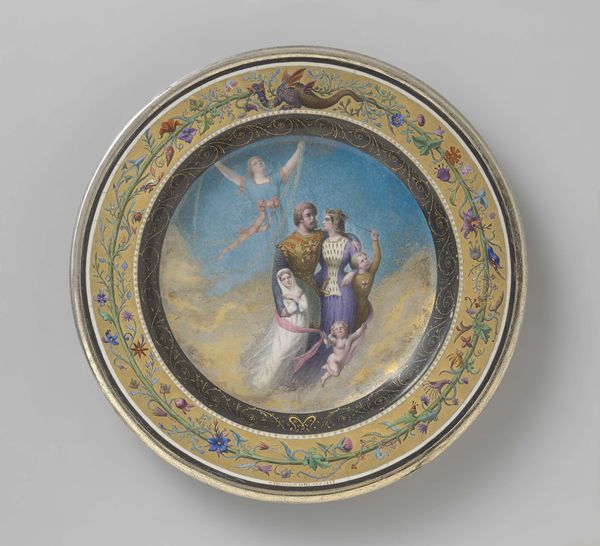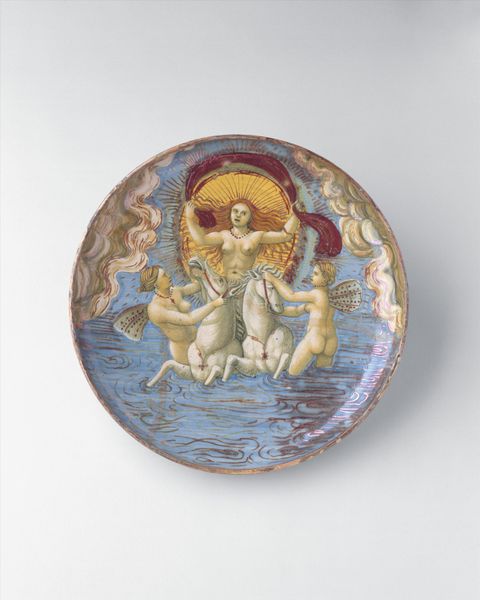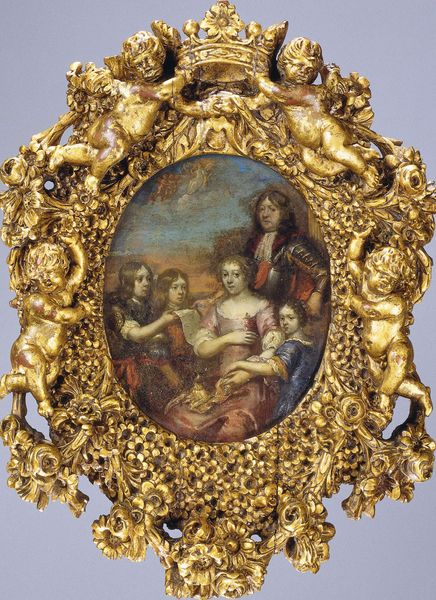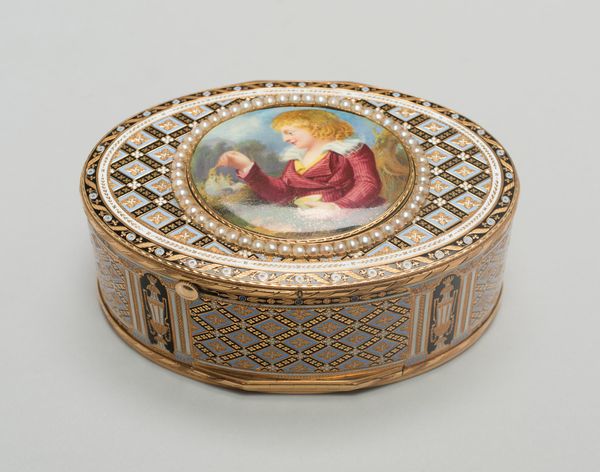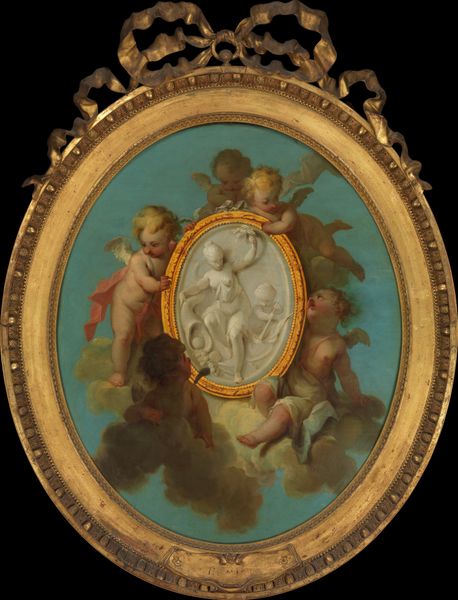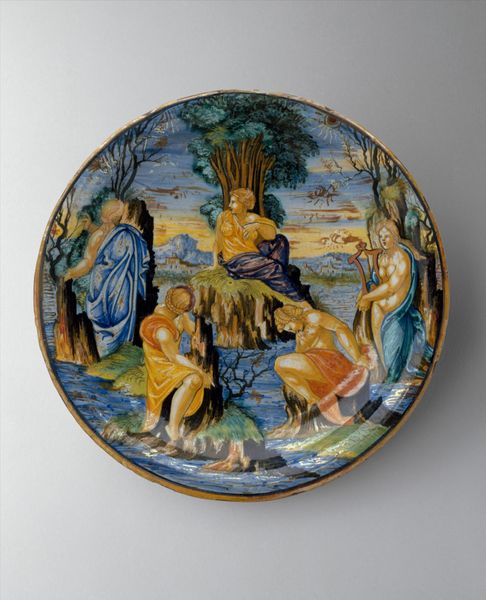
#
round frame
#
3d sculpting
#
wedding photograph
#
3d printed part
#
jewelry design
#
virtual 3d design
#
round design
#
3d shape
#
framed image
#
disk design
Copyright: Rijks Museum: Open Domain
Andreas Zelling captured the poignant scene of Dido and Aeneas on this enameled watch, likely in the 18th century. Note Cupid overhead, bow drawn, a symbol of love’s capricious power, linking the fate of Dido and Aeneas. Cupid, or Eros, has roots stretching back to ancient Greek mythology, where he embodies primal desire. But his image has softened over time, evolving from a powerful deity to a cherubic figure, like the one seen here. Yet, his arrow maintains its potent symbolism, representing the sudden, often irrational, force of attraction, a force that has propelled countless narratives throughout art history. Consider the enduring appeal of this motif; love as an external force, an arrow piercing the heart. It speaks to our collective understanding of love as both a euphoric and potentially destructive power. Just as Dido is captivated by Aeneas, we, too, are drawn into this timeless drama, a testament to the power of symbols to evoke deep-seated emotions and memories. And so the wheel turns, bringing us back to the cyclical nature of human experience.
Comments
No comments
Be the first to comment and join the conversation on the ultimate creative platform.
